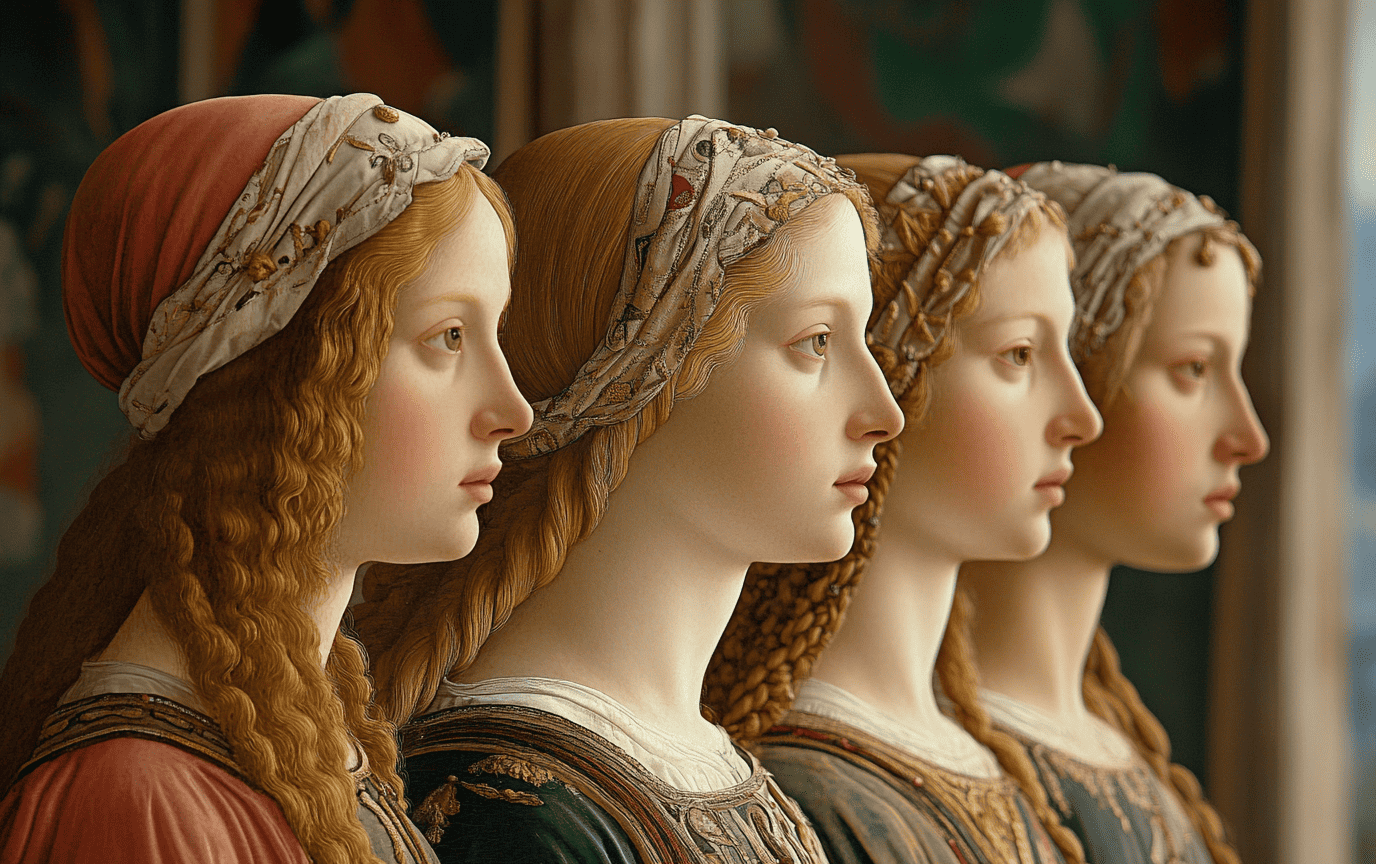The Renaissance: A Cultural Rebirth in Europe
The Renaissance. Just whisper that word, and one can almost feel the pulse of a vibrant era—a time when the shackles of the Middle Ages were cast aside, paving the way for a flood of creativity, exploration, and profound intellectual transformation. This was not merely a period; it was a rebirth, a renaissance, a journey of rediscovering what had long been forgotten and reimagining the very fabric of European culture.
Spanning from the 14th to the 17th century, the Renaissance ignited a spark that illuminated all corners of human endeavor—art, science, literature, and philosophy. This movement would establish the foundations of the modern world, propelling humanity into a realm of possibilities governed not by the divine alone, but by the power and potential of the human spirit.
The Birthplace of the Renaissance: Italy
Italy stands proudly as the cradle of the Renaissance, with Florence at its heart. Imagine a city, where the weight of affluence from trade fills the air, and the hum of intellectual discourse is a constant backdrop. The Medici family, those illustrious patrons of art and culture, nurtured an environment that would be transformative. “This is a canvas like no other,” one might say, while gazing upon the captivating frescoes adorning the walls of the great cathedrals.
In the dimly lit corners of dusty libraries, figures like Poggio Bracciolini scoured ancient texts, breathing life into forgotten manuscripts. It was here, nestled in the embrace of antiquity, that scholars exchanged ideas, lighting the fire of inquiry that would soon blaze across Europe.
Humanism and Classical Learning
At the core of this rebirth lay humanism—a movement that celebrated human potential and agency. Renaissance humanists believed in the ability of individuals to carve out their own destinies through education and effort. They reached into the treasure troves of classical Greek and Roman literature, dusted off the covers of works by Plato, Cicero, and others, reintroducing their wisdom to a world starved for enlightenment.
Just like a craftsman honing his skills, thinkers such as Lorenzo Valla and Erasmus dissected texts, ensuring that the essence of human experience and morality was accessible to all. “To be human is to strive, to learn, to challenge,” they proclaimed. And challenge they did, reshaping beliefs about man’s place in the cosmos and paving the way for revolutionary ideas that questioned the status quo, nurturing seeds that would eventually give rise to the Reformation.
Artistic Innovations
“But what is art?” one might ponder, standing before the enigmatic smile of the Mona Lisa. The answer lies not in mere strokes of paint, but in the deeper expressions of humanity that art captures. The Renaissance cultivated genius in the likes of Leonardo da Vinci, Michelangelo, and Raphael, who delved into the human psyche, portraying emotions with exquisite precision.
With pioneering techniques such as linear perspective, chiaroscuro, and sfumato, they transformed art into a dynamic medium of engagement. “This world is a canvas,” they seemed to whisper, as landscapes fused with human figures, and divine scenes blended with daily life, inviting the viewer to feel, to connect. The shift from the ethereal to the tangible showed an eagerness to explore the world and its complexities, transcending the confines of purely religious art.
Moreover, innovations in oil painting, thanks to the Flemish van Eyck brothers, offered brilliant hues and intricate textures, enabling artists to compose masterpieces that were as much about tactile sensations as they were about vision. It was an explosion of creativity, an orchestra of colors and forms, harmonizing with the newfound appreciation for human presence.
Scientific and Technological Advancements
This cultural renaissance was equally matched by an intellectual one, where the boundaries of science were pushed wide open. Thinkers like Andreas Vesalius turned anatomy into an art of its own, challenging misconceptions with detailed observations that would lay the groundwork for modern biology. Tycho Brahe gazed skyward, unearthing truths about our universe that echoed through generations, transforming how humanity perceived its place among the stars.
Yet, perhaps the most revolutionary of inventions was Johannes Gutenberg’s printing press—a mechanical wonder that reshaped communication, enabling ideas to spread across the continent like wildfire. “Words can change the world,” one might hear in hushed tones among scholars and innovators who understood the power of the written word. Knowledge became democratized; it was no longer confined to the privileged few. The pages of books turned, and with each revolution, a new enlightenment dawned.
Economic and Social Changes
This era of awakening did not occur in isolation. Looming large were the economic transformations that fostered a new world order. As feudalism began to crumble, the seeds of capitalism were sewn. The aftermath of the Black Death had left a vacuum; labor shortages empowered workers to demand wages worthy of their contributions. “We're not just cogs in the wheel,” they declared, their voices echoing in the newly thriving markets.
With the rise of cities, a middle class emerged—an entity driven not by allegiance to nobles but by merit and wealth. This socio-economic shift gave rise to ambitious patrons eager to endorse artistic and intellectual endeavors, elevating society as a whole. Picture bustling streets adorned with the vibrancy of life, colors flowing from the palettes of aspiring artists, and dialogues flourishing as ideas crisscrossed the cityscape.
The Northern Renaissance
While Italy lit the first sparks of this grand movement, the flames spread northward, igniting a uniquely Northern Renaissance. In regions like the Netherlands and Germany, artists such as Pieter Brueghel the Elder and Albrecht Dürer took up the torch, emphasizing religious themes interwoven with everyday life. “Life is our canvas,” became a mantra as they depicted the common man’s struggles and joys, reflecting a society on the cusp of monumental change.
The use of vernacular languages flourished, and the printing press found a new audience, breaking the chains of Latin’s dominance in scholarly work. “Words belong to the people,” became the rallying cry, as literature became more inclusive, connecting hearts and minds across class barriers.
Legacy of the Renaissance
The Renaissance’s impact reverberated through time like echoes of a once-vibrant symphony. It laid the foundations for the Enlightenment and the Scientific Revolution, fostering an intellectual climate bursting with creativity and curiosity. The “Renaissance Man,” an archetype inspired by the likes of Leonardo da Vinci, became synonymous with versatility—individuals who could navigate multiple domains, exemplifying the era’s essence.
Today, we stand upon the shoulders of giants. The legacies of the Renaissance are etched indelibly into the fabric of our lives, shaping artistic expression, scientific inquiry, and philosophical thought. As travelers of time, we embrace this rich heritage—a cultural rebirth that continues to inspire our collective journey.
Want to dive deeper into the nuances of the Renaissance? Discover more layers to this extraordinary chapter in history.
Interested in more insightful reads? Check out our Travel Tips section for the latest advice. For lifestyle inspiration, explore our Lifestyle category, and dive into amazing destinations at Destinations. Don’t forget to connect with us on YouTube, or follow our adventures on Instagram and Pinterest.













